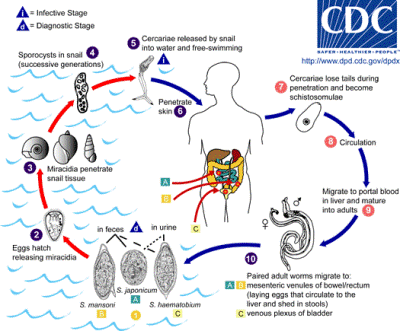Life History and Interactions
Life History:
The oldest fossils of Pleurocera acuta date back to the late Mesozoic
era (Dazo, 1965). According to
Dazo, there are at least two theories as to where the Pleuroceridae group
originated from. One theory states that the snails came from the west
coast, near Colorado and Montana, and migrated east with Unionidae.
But how could the snails travel that far? The proposed answer is found
by looking at the historic locations of present day lakes and streams.
These past streams covered most of North America, and according to the
theory made
it possible for the snails to migrate the long distance. The second theory is
that the group Pleuroceridae originated in the southeastern part of the
United States. The reasoning behind this theory is that the south is a
common habitat to many other related species and is is more readily
available to see the stream and lake connections from that area to the
current location (Dazo 1965).

Interactions:
Snails like Pleurocera acuta and other Mollusks are often a host or
intermediate host to variety of parasites and diseases
(Hickman, 2009). For example, a
Gastropod is the intermediate host of Schistosoma mansoni, a Trematoda
parasite (Hickman, 2009). The definitive host for this disease is a human vertebrate
(Hickman, 2009). According to the Center For Disease Control, the
eggs are found in the feces of the human and develop into miracidia which
penetrate the snail tissue. Inside the snail, the larva undergoes two
stages of sporocyte development, the later being a free swimming form called
cercariae. This cercariae is released from the snail to infect humans
and continue the cycle (Center For Disease Control,
2011).
For more information about Schistosomiasis visit the
Center
For Disease Control.
Next: References
About The Author
HOME